 |
 |
 |
| |
Risk of Muscle Breakdown in HIV - see slides below article
|
| |
| |
By Ed Susman, Contributing Writer, MedPage Today
Published: October 26, 2011
BOSTON -- The risk for rhabdomyolysis, the rapid destruction of skeletal muscle, is significantly elevated in HIV-infected patients, according to researchers here.
Action Points
·
Note that this study was published as an abstract and presented at a conference. These data and conclusions should be considered to be preliminary until published in a peer-reviewed journal.
·
Explain that the risk for rhabdomyolysis, the rapid destruction of skeletal muscle, is significantly elevated in HIV-infected patients.
·
Note that risk factors for rhabdomyolysis among the HIV-positive patients were a lower CD4-positive cell count, the use of lipid-lowering drugs such as statins, HIV RNA levels >500 copies/mL, alcohol or drug use, black race, acquisition HIV through male-to male sexual contact, and longer duration of HIV infection.
In the cohort study, William Towner, MD, from Kaiser-Permanente Southern California in Los Angeles, and colleagues identified 259 cases of rhabdomyolysis among HIV-infected patients for a rate of 260 per 100,000 patient-years. That compared with 362 cases among the controls or 32 per 100,000 patient-years.
When adjusted for variables, it appeared that patients with HIV had a 6.5-fold risk of rhabdomyolysis when compared with controls who were not HIV-infected (P<0.001), Towner said in his presentation at the annual meeting of the Infectious Diseases Society of America.
"Numerous case reports of rhabdomyolysis among HIV-infected persons exist in the literature," Towner noted. "However, few cohort studies have evaluated the independent risk of HIV and HIV-associated immunodeficiency on the risk of rhabdomyolysis."
Using data from the Kaiser-Permanente database, Towner and colleagues compared adult HIV-positive patients to HIV-negative patients on a 1-to-10 ratio, establishing a cohort of 22,081 HIV-positive patients and 230,069 controls.
The HIV patients had a mean of five years of follow up; the controls had six years of follow up. The patients were about 40 years-old and 91% of the cohort was men. About 50% were white. About 5% of each group used lipid-lowering drugs, such as statins.
The increased risk of rhabdomyolysis was seen in patients when they were on and off highly active antiretroviral therapy (HAART), the group found. CD4-positive cell counts also played a role in the risk for rhabdomyolysis. For instance, HIV-infected patients on HAART with a CD4-positive cell count of >500 had an adjusted rate ratio of 5.3 (95% CI 4.0 to 7.0, P<0.001). For patients not on HAART with the same CD4-positive cell count, the ARR was 4.1 (95% CI 2.2 to 7.5, P<0.001).
In HIV-infected patients only, a CD4-positive cell count of <200 was associated with an increased risk (ARR 1.5, P=0.021) compared with patients with a higher CD4-positive cell count.
Overall, the researchers determined that risk factors among the HIV-positive patients were:
·
A lower CD4-positive cell count
·
The use of lipid-lowering drugs such as statins
·
HIV RNA levels >500 copies/mL
·
Alcohol or drug use
·
Black race
·
Acquisition HIV through male-to male sexual contact
·
Longer duration of HIV infection
"I was sort of surprised that HIV was an independent risk factor for rhabdomyolysis," said Joel Gallant, MD, from Johns Hopkins University in Baltimore and IDSA session moderator.
"There are many things that can cause rhabdomyolysis in people with HIV," Gallant told MedPage Today. "The most common would be the statins, which interact with protease inhibitors to give you higher levels ... I wondered if patients were on excessive doses of these drugs. You can use statins with protease inhibitors if you use the right ones and don't use high doses."
"But their findings suggest that this isn't just about statins, that there is something else that is related to how advanced your HIV is. It is an interesting finding," Gallant added.
Towner said that only 5% of the patients with HIV that developed rhabdomyolysis were taking statins with protease inhibitors at the time of an event.
----------------------------------------------
Rhabdomyolysis in HIV-infected versus HIV-uninfected Persons Enrolled in Kaiser Permanente California
Reported by Jules Levin
IDSA Oct 20-23 2011 Boston, MA
William J. Towner1, Wendy A. Leyden2, Chun R. Chao3, Lanfang Xu3, Michael A. Horberg4, Daniel Klein5, Beth Tang3, Leo Hurley2,
Michael J. Silverberg2
1 Kaiser Permanente Southern California, Los Angeles, CA
2 Kaiser Permanente Northern California, Oakland, CA
3 Kaiser Permanente Southern California, Pasadena, CA
4 Mid-Atlantic Permanente Research Institute, Rockville, MD
5Kaiser Permanente Nothern California, Hayward, CA
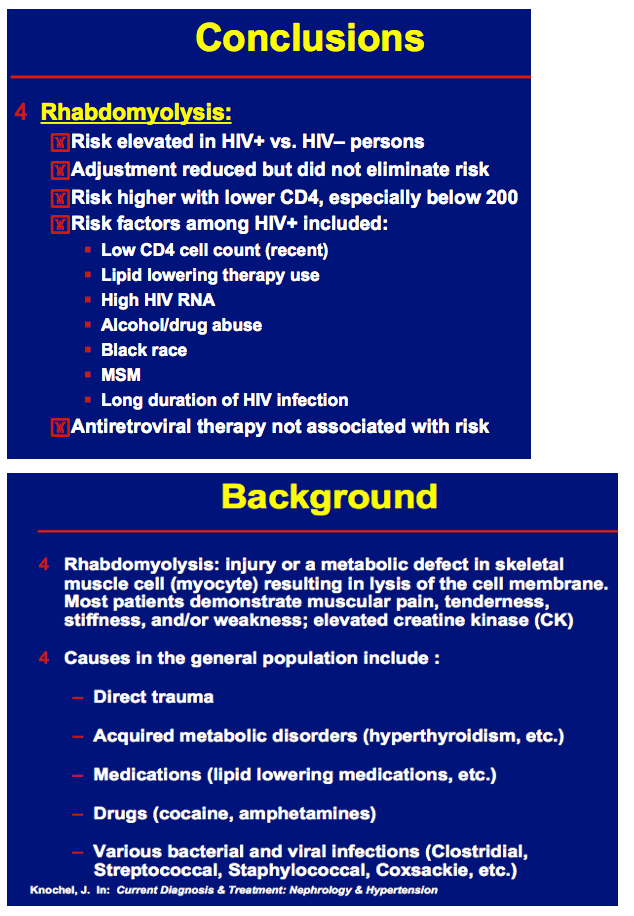
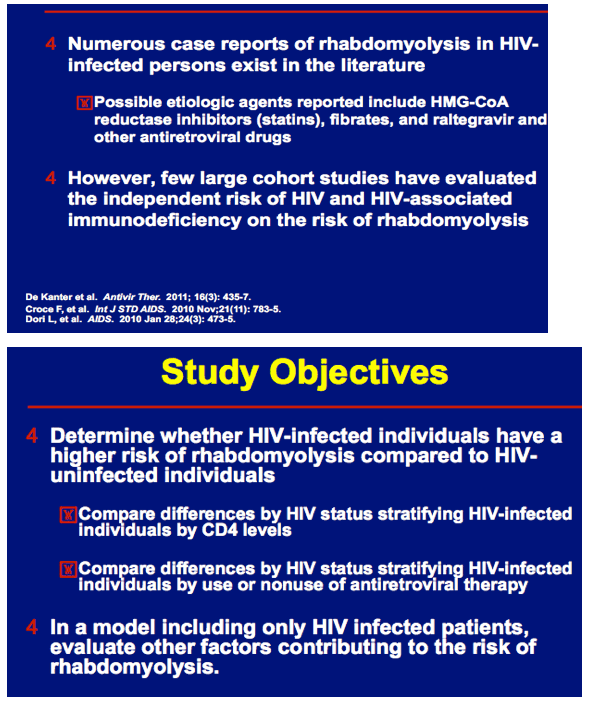
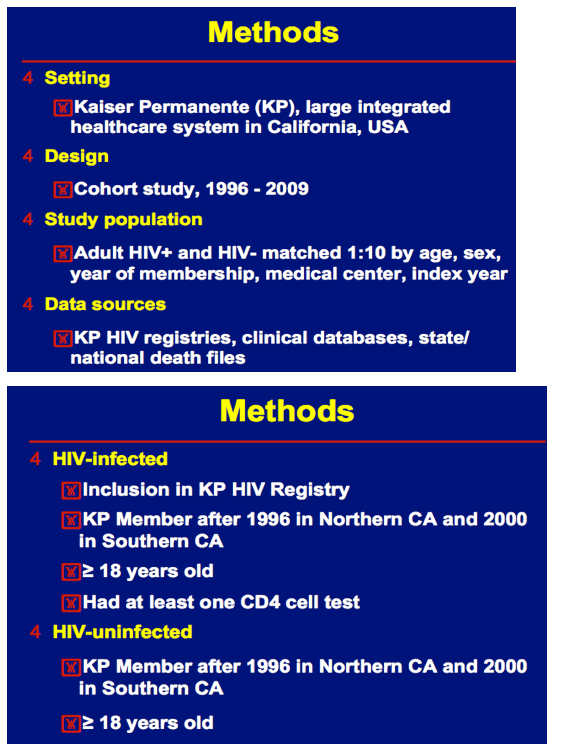
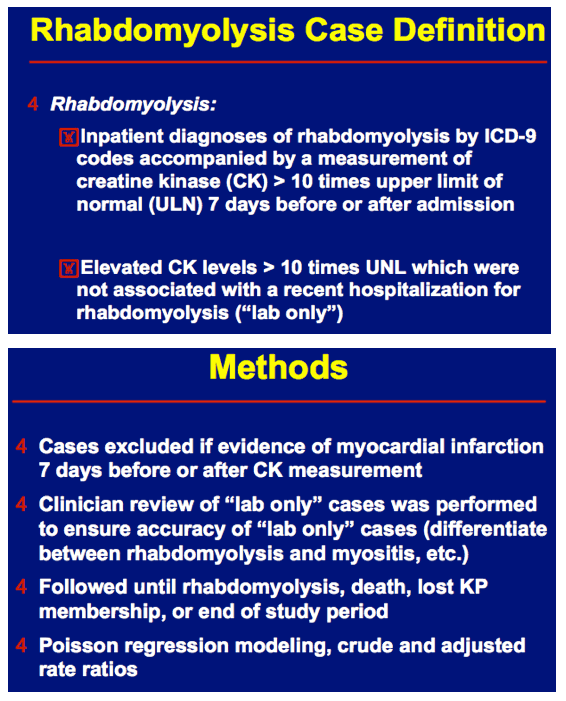
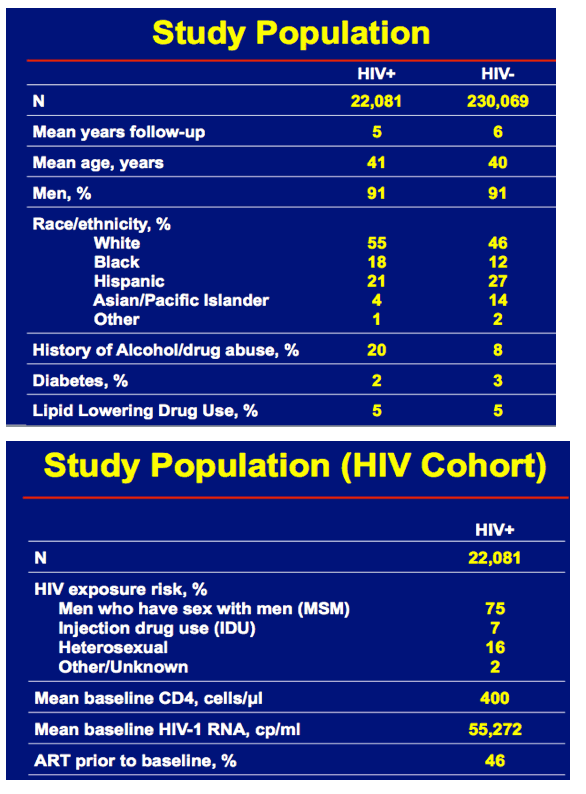
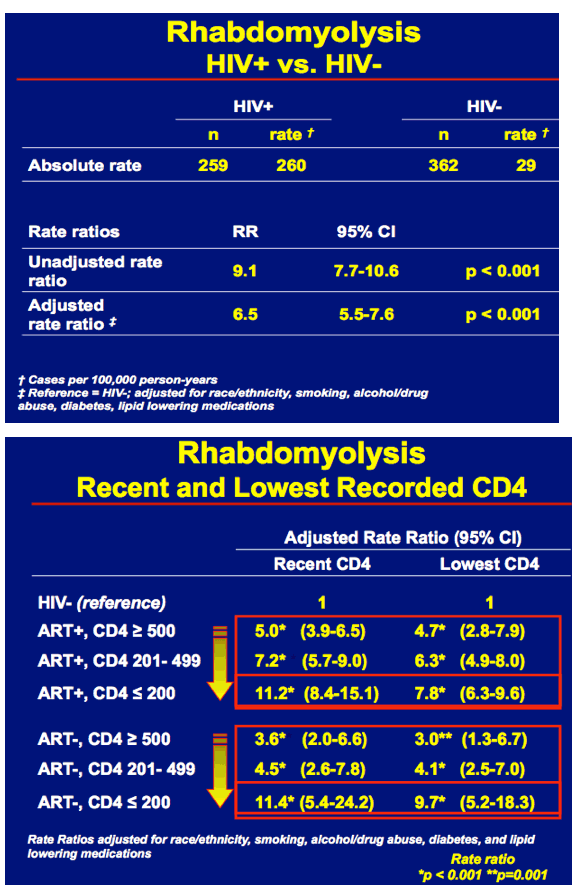
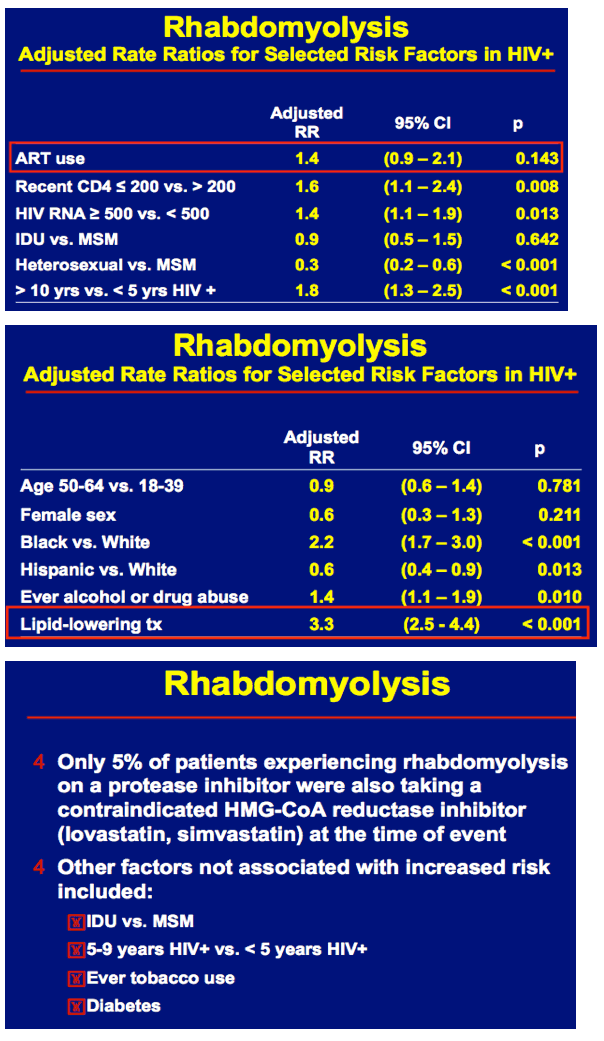
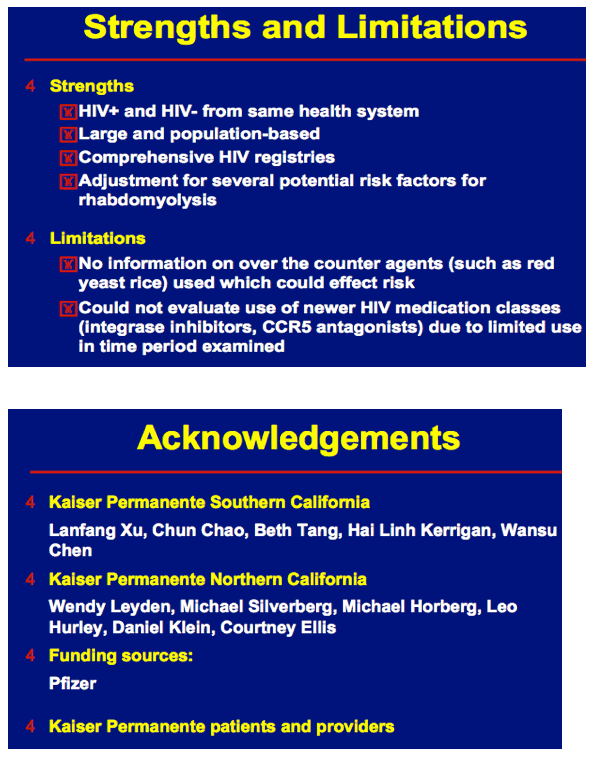
|
| |
|
 |
 |
|
|